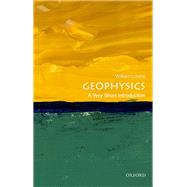
Geophysics: A Very Short Introduction
by William LowrieRent Textbook
Rent Digital
New Textbook
We're Sorry
Sold Out
Used Textbook
We're Sorry
Sold Out
Summary
In this Very Short Introduction, William Lowrie describes the internal and external processes that affect the planet, as well as the principles and methods of geophysics used to investigate them. He explains how analysis of the seismic waves produced in earthquakes reveals the internal structure of the Earth. Geophysicists have established that the greatest source of energy powering geological processes is the Earth's internal heat. Deep inside the Earth, the temperature is high enough to produce a fluid outer core of molten iron. It is the motion in this molten iron layer that produces the Earth's magnetic field, which shields the planet against harmful radiation from the Sun and outer space, and thus makes the planet habitable. Lowrie describes how the magnetic field also magnetizes rocks during their formation, leaving a permanent record of the ancient field and its direction that geophysicists have learned to use to interpret past motions of the continents and tectonic plates. From analyzes of Earth's deepest interior to measurements made from Earth-orbiting satellites, Lowrie shows how geophysical exploration is vitally important in the search for mineral resources, and emphasizes our need to understand the history of our planet and the processes that govern its continuing evolution.
ABOUT THE SERIES: The Very Short Introductions series from Oxford University Press contains hundreds of titles in almost every subject area. These pocket-sized books are the perfect way to get ahead in a new subject quickly. Our expert authors combine facts, analysis, perspective, new ideas, and enthusiasm to make interesting and challenging topics highly readable.
Author Biography
William Lowrie was elected professor of geophysics at the Swiss Federal Institute of Technology in Zurich, Switzerland, in 1974, where he taught and researched until retirement in 2004. His research activity involved interpreting the Earth's magnetic field in the geological past from the magnetizations of dated rocks. The results were applied to the solution of geologic-tectonic problems, and to analysis of the polarity history of the geomagnetic field. He has authored 135 scientific articles, and his books include Fundamentals of Geophysics (Cambridge University Press, second edition 2007); and A Student's Guide to Geophysical Equations (Cambridge University Press, 2011). He has been President of the European Union of Geosciences (1987-9), and Section President and Council member of the American Geophysical Union (1998-2002). Lowrie was elected Fellow of the American Geophysical Union in 1990 and Member of the Academia Europaea in 2000.
Table of Contents
What is geophysics?
1. Planet earth
2. Seismology and Earth's internal structure
3. Seismicity - the restless Earth
4. Gravity and the figure of the Earth
5. Earth's heat
6. Earth's magnetic field
Afterthoughts
Further Reading
Index
An electronic version of this book is available through VitalSource.
This book is viewable on PC, Mac, iPhone, iPad, iPod Touch, and most smartphones.
By purchasing, you will be able to view this book online, as well as download it, for the chosen number of days.
Digital License
You are licensing a digital product for a set duration. Durations are set forth in the product description, with "Lifetime" typically meaning five (5) years of online access and permanent download to a supported device. All licenses are non-transferable.
More details can be found here.
A downloadable version of this book is available through the eCampus Reader or compatible Adobe readers.
Applications are available on iOS, Android, PC, Mac, and Windows Mobile platforms.
Please view the compatibility matrix prior to purchase.
